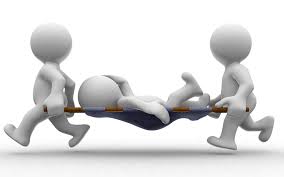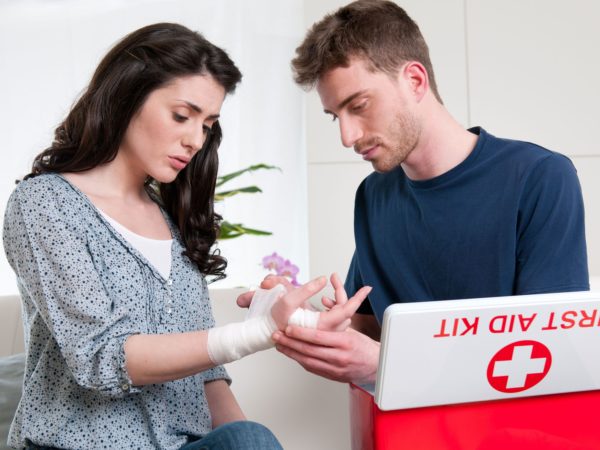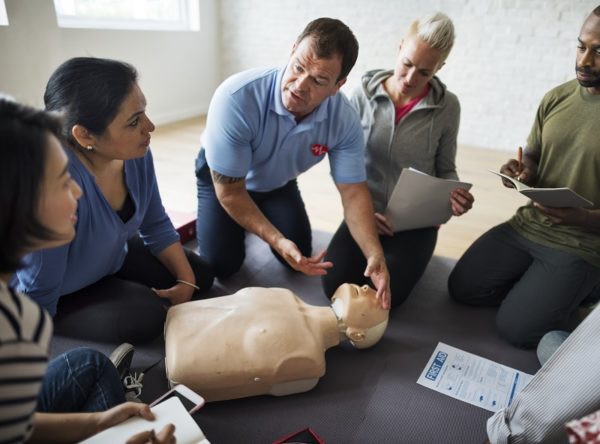Get Qualified
Why Martial Arts Instructors need to be First Aid qualified

As a martial arts instructor it is vital that you do a recognized first aid course, and get qualified, so that you are prepared for any eventuality when working with students.
Whether you’re in the dojang or training in the park, you never know what can happen at any given moment. Accidents can and will occur. While you may take every precaution, you never know when a small accident can turn into a major injury or even a life threatening incident. It pays to be prepared for all emergencies.
The very nature of what we do, as martial arts instructors, involves a higher than normal risk of injuries, regardless of how good your warm up is, such as:
- soft tissue injuries due to ballistic nature of movements
- joint injuries through over extension, or awkward jumping, landing and spinning
- breaks, fractures as a result of a fall or other impact, such as board breaking
- concussions or other bleeding due to inadvertent contact during sparring
- exercise induced breathing difficulties
- temperature regulation when training in hot conditions
- sudden cardiac arrest due to intense physical exertion, which ironically, is the major cause of cardiac arrest
These are just the most common occurrences, that every school will encounter over time, no matter how well you are prepared.
CHECK OUT OUR FIRST AID VIDEOS
- Being a Black Belt Instructor Is Not Enough
A black belt in itself, is not a qualification, but often it is all that is required to run your own school. Not only does it not guarantee you can teach the skills effectively, even more critically, it does not measure your ability to respond in the event of an injury. If an accident occurs, of course you can call an ambulance. However, no ambulance can ever arrive instantaneously on scene. In fact, response times, on average, are between 7 and 13 minutes, which is a long time depending on the emergency. Every second can be vital in a medical emergency and, as an instructor, you should be the highest trained and qualified person there.
The treatment and first aid you can give in those vital seconds and minutes can make all the difference. As a result, it is recommended that martial arts instructors not only have first aid training but that they also have CPR training included in their first aid course.
- Not Everyone Can Apply First Aid
Not everyone at the scene of an accident or medical emergency can apply first aid. Here are some interesting statistics:
- 383,000 out of hospital sudden cardiac arrests happen a year
- 88% of cardiac arrests happen at home
- Many patients appear health with no known risk factors or heart disease
- Effective bystander CPR can triple a victim’s chance of survival
- Only 32% of cardiac arrest victims get CPR from a bystander
- A quarter of all emergency room visits can be avoided with first aid and a CPR certification
Having the appropriate first aid and CPR training as a martial arts instructor is invaluable to you and your students that you get qualified. By being prepared you can not only help your stduents get skilled and healthier, but also help should any complications arise.
- You Might Be Liable For Injury
Liability is a pretty horrible word for most martial arts instructors and organizations. However, if you aren’t keeping your first aid skills up to date then you might be putting yourself at increased risk. If you own your own dojang, run tournaments, personal training sessions, run camps, etc., then you legally need to have the right insurance and you need to be first aid certified. Alternatively, you must have a first aid qualified member of staff who is and is always onsite during training sessions. If an injury occurs, no matter who was at fault, you will be automatically liable if you’re not going about things legally.
Finally, not having completed a first aid course, and keeping your qualifications current, puts you and your clients at unnecessary risk every time you conduct training and puts your reputation at risk. So why risk it when first aid courses are so easy to attend, or arrange for your school ?
- First Aid Kits
 It is a fantastic idea to have your own personal first aid kit with you on hand. Most dojangs should have their own first aid kits but you can’t always rely on them to be appropriately stocked. So supplement them with your own kit. Quality first aid supplies aren’t that expensive and they allow you to quickly treat basic injuries that commonly occur among out of shape clients.
It is a fantastic idea to have your own personal first aid kit with you on hand. Most dojangs should have their own first aid kits but you can’t always rely on them to be appropriately stocked. So supplement them with your own kit. Quality first aid supplies aren’t that expensive and they allow you to quickly treat basic injuries that commonly occur among out of shape clients.
First Aid kits should be checked and replenished (or replaced) each year. Check the expiration dates on medications and ointments, etc. Keep your kit out of harsh temperatures and environments where possible. Keep a notebook with the medications and ointments, with their expirations listed, so you can replace easily as needed.
The Basic First Aid Kit
A basic first aid kit should include:
- Adhesive bandages
- Adhesive tape
- Antibiotic treatment
- Antiseptic
- Breathing barrier
- Burn dressing
- Burn treatment
- Cold pack
- Eye coverings
- Eye wash
- First aid guide
- Hand sanitizers
- Medical exam gloves
- Roller bandage
- Scissors
- Sterile pads
- Trauma pads
- Triangular bandage
- Bronchodilator and spacer
- But I’ve Already Done a First Aid Course
Having all the right equipment on hand is useless if you don’t have the skills to use it. It is essential for a martial arts instructor to get qualified and learn first aid skills, as is keeping that training refreshed. As we all know, a skill that goes unpractised can become rusty. In fact, the reason CPR training is recommended to be renewed is that there are always advancements in training and in methods of performing both CPR and first aid responses.
Furthermore, first aid training allows a martial arts instructor to spot the small signs that a student is in distress before a small issue turns into a medical emergency.
First Aid Course Options :
Global Fitness Institute is Government authorized to deliver the following First Aid courses Nationally :
- HLTAID011 – Provide first aid (a.k.a Level 2 First Aid)
- HLTAID014 – Provide advanced first aid (a.k.a Level 3 First Aid)
- HLTAID009 – Provide cardiopulmonary resuscitation (CPR)
- HLTAID012 Provide an emergency first aid response in an education and care setting
- PUAOPE010 Operate an automated external defibrillator in an emergency
Remember an accident can happen to anyone. So get qualified and don’t let your skills get rusty because you never know when the next big emergency is just around the corner.
Organize a First Aid course for your school / association – contact us to book your group’s session

